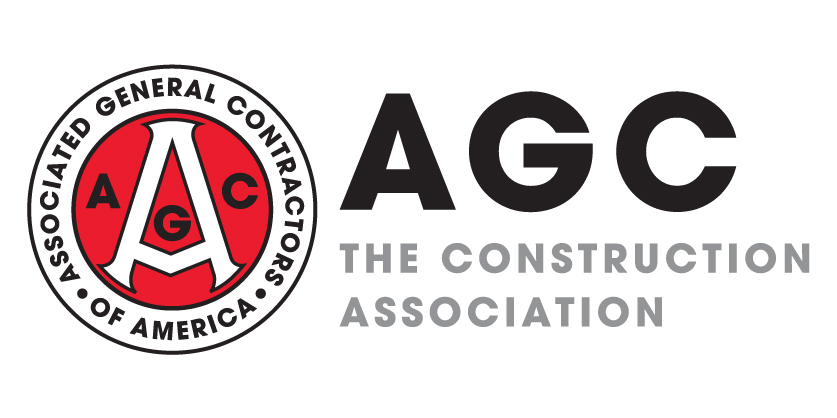
Filling craft positions and some salaried positions remains as great a challenge for contractors as it was a year ago, according to participants in the Autodesk-AGC of America 2019 Workforce Survey, released today. (The site includes separate results for four regions and 23 states, union and open-shop firms, and three revenue size ranges.) Of the 1,935 respondents, 91% report their firms plan to hire hourly craft personnel in the next 12 months for expansion (19%) or replacement (72%), close to the 93% who said the same in the 2018 survey. But 80% stated they were having a hard time filling some hourly craft positions (same as in 2018). In addition, 57% said they were having a hard time filling some salaried positions (vs. 56% in 2018), while 12% reported no difficulty and 32% had no openings. For all but one of 20 specific craft positions listed in the survey, at least half of respondents whose firms employ that craft said filling positions was harder than last year. (The sole exception was painters, with 49% of respondents saying they were harder to find than last year.) The hardest craft positions to fill were concrete workers, reported as harder to fill than a year ago by 69% of firms that currently employ them; pipelayers, reported by 66%; carpenters, equipment operators and cement masons, each cited by 65%. For each craft, fewer than 4% of respondents said filling the position was easier than last year, while 7-20% said they hired without difficulty. Among 10 salaried positions, 48% of respondents said project manager/supervisor positions were harder to fill than last year; engineers, listed by 37% of firms; and environmental compliance professionals, 33%. More firms than in 2018 increased base pay rates for hourly craft workers (68%, vs. 62% in 2018) and salaried workers (58%, vs. 56% in 2018) because of difficulty filling positions. To add to their labor supply, firms turned to: engaging with career-building programs (50%, vs. 48% in 2018); executive and non-craft worker search firms (29%, same as in 2018); and craft staffing firms (27%, vs. 32% in 2018). To replace workers or skills, 29% of firms invested in technology to automate processes to supplement worker duties; 24% used labor-saving equipment (e.g., drones, robots, 3-D printers, laser- or GPS-guided equipment); and 23% used methods to reduce onsite worktime (e.g., lean construction, virtual construction or offsite fabrication). Nearly half of respondents said projects have taken longer (44%) and/or costs have been higher than anticipated (43%), while 44% have put higher prices into bids or contracts and 29% have put in longer times.
Seasonally adjusted construction employment increased from July 2018 to July 2019 in 40 states and the District of Columbia and declined in eight states, an AGC analysis of Bureau of Labor Statistics data released on August 16 showed. Texas added the most construction jobs (48,400 jobs, 6.6%), followed by California (37,100, 4.3%), Florida (21,300, 3.9%) and Arizona (17,400, 11%). Wyoming added the highest percentage of construction jobs (13%, 2,600 jobs), followed by West Virginia (12%, 5,000), North Dakota (12%, 3,000) and Arizona. Construction employment reached new highs (in records dating back to 1990) in six states: Nebraska, Oklahoma, Oregon, Texas, Utah and Washington. Louisiana again lost the largest number and percentage of construction jobs for the year (-12,100, -7.9%). Other states with large job losses include Ohio (-2,900, -1.3%) and South Carolina (-2,800, -2.7%). Other states with a substantial percentage decline include Vermont (-3.3%, -500 jobs), South Carolina and Connecticut (-2.6%, -1,500 jobs). Construction employment rose from June to July in 25 states, decreased in 22 and was flat in Kentucky, Idaho, D.C., and Vermont. (AGC's rankings are based on seasonally adjusted data, which in D.C., Hawaii and Delaware is available only for construction, mining and logging combined.)
The Architecture Billings Index (ABI) rose to a reading of 50.1, seasonally adjusted, in July from 49.1 in June, the American Institute of Architects reported on Wednesday. The ABI measures the percentage of surveyed architecture firms that reported higher billings than a month earlier, less the percentage reporting lower billings; scores above 50, on a 0-100 scale, suggest billings increased overall. "A growing number of architecture firms are reporting that the ongoing volatility in the trade situation, the stock market, and interest rates are causing some of their clients to proceed more cautiously on current projects," AIA Chief Economist Kermit Baker commented. Scores (based on three-month moving averages) varied by practice specialty: residential (mainly multifamily), 50.6, up from 48.5 in June; institutional, 49.8, up from 48.8; commercial/industrial, 49.2, down from 51.7; and mixed practice, 48.9, down from 50.7.
Housing starts (units) in July slumped 4.0% at a seasonally adjusted annual rate from June but rose 0.6% year-over-year (y/y) from July 2018, the Census Bureau reported on Wednesday. Multifamily (five or more units) starts tumbled 17% from June and 4.7% y/y. Single-family starts increased 1.3% for the month and 1.9% y/y. Residential permits climbed 8.4% for the month and 1.5% y/y. Multifamily permits jumped 25% and 9.2%, respectively. Single-family permits rose 1.8% in July but decreased 3.8% y/y. Despite the inconsistent results, multifamily permits in the first seven months of 2019 combined totaled 250,000, 21% higher than year-to-date starts, implying there is a backlog of projects that may break ground later in the year.
Construction data firm ConstructConnect reported on August 15 that the value of nonresidential starts in July fell 3.2% y/y from July 2018, not seasonally adjusted. For January-July combined, starts fell 6.9% year-to-date, compared with the first seven months of 2018. Residential starts tumbled 20% y/y and 13% year-to-date, with multifamily starts down 25% year-to-date and single-family starts down 8.0%. Nonresidential starts rose 6.9% y/y but slid 3.2% year-to-date, as nonresidential building starts fell 4.2% year-to-date and civil starts slipped 1.3%.




